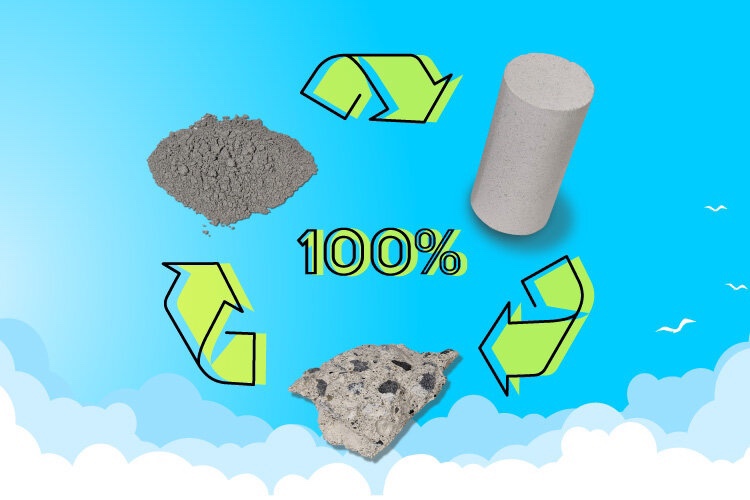
Tokyo Univ:コンクリートを100%リサイクル!
100% recyclage du béton !
100 % Recycling von Beton!
100% recycling of concrete!
東京大學:100%回收混凝土!
ーがれきを砕いて圧縮成形し、高温・高圧で蒸すー
東京大学
生産技術研究所
酒井(雄)研究室コンクリートがれきを粉砕圧縮成形し、高圧水蒸気で処理することで、
「コンクリートがれきを100%リサイクル」に成功。
「硬化体を製造する新技術」を開発しました。
コンクリート
100%リサイクル「コンクリートがれきのリサイクル」で、他の材料の投入を必要としません。
「廃棄物を発生せず、十分な強度の材料にリサイクルする手法」はこれまでありません。
Press Release – 東京大学
https://r.goope.jp/ysakai/info/4696249
Université de Tokyo : 100% recyclage du béton !
ーÉcrasez les gravats, compressez-les et vaporisez-les à haute température et haute pressionー
Université de Tokyo
Institut de technologie de production
(O) Laboratoire Sakai
En pulvérisant et comprimant les débris de béton et en les traitant avec de la vapeur à haute pression,
A réussi le recyclage à 100% des débris de béton.
Nous avons développé une nouvelle technologie pour fabriquer des produits de durcissement.
béton
100% recyclé
Le « recyclage des gravats de béton » ne nécessite pas l’apport d’autres matériaux.
Jusqu’à présent, il n’existait pas de méthode sans déchets pour recycler des matériaux suffisamment résistants.
Communiqué de presse – L’Université de Tokyo
Universität Tokio: 100 % Recycling von Beton!
ーZerkleinern Sie den Schutt, komprimieren Sie ihn und dämpfen Sie ihn bei hoher Temperatur und hohem Druckー
Universität Tokio
Institut für Produktionstechnik
(O) Sakai-Labor
Durch Pulverisieren und Komprimieren von Betonschutt und Behandlung mit Hochdruckdampf,
Erfolgreiches 100%iges Recycling von Betonabfällen.
Wir haben eine neue Technologie zur Herstellung von Härteprodukten entwickelt.
Beton
100 % recycelt
Beim „Betonschutt-Recycling“ ist der Einsatz anderer Materialien nicht erforderlich.
Bisher gab es keine abfallfreie Methode, Materialien mit ausreichender Festigkeit zu recyceln.
Pressemitteilung – Die Universität Tokio
Concrete Evidence: Simple Method to Improve the Sustainability of Construction
– Institute of Industrial Science,
the University of Tokyo
The researchers tested mixes of recycled portland cement concrete
with iron/steel and blast furnace slag additives.
They tested three common post-compaction heat treatments.
The heat treatments all imparted microstructural reorganizations that resulted in improved properties.
Furthermore,
incorporating slag increased the density and fine-scale homogeneity of the concrete, which further contributed to improved properties.
For example,
in one concrete mixture,
post-compaction autoclaving at 180°C for 8 h increased the compressive strength by >5× compared with no autoclaving.
In other words,
the researchers have developed an energy-efficient means of improving the outcome of concrete recycling.
“Different thermal treatments improved the strength of the concrete, but by different mechanisms,” says Mostazid.
“For example, autoclaving the concrete corresponded to hydrogarnet production, a different mineral than what we observed after simple heat treatments.”